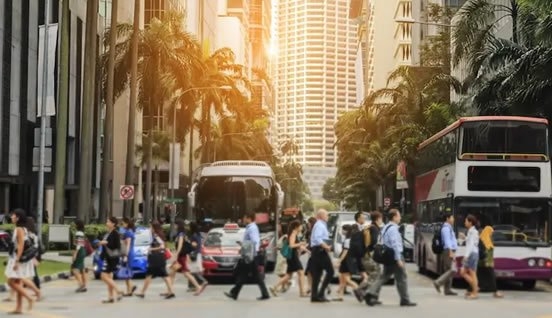Editor’s note:
This guide explains what US Persons should expect when opening and using Singapore bank accounts. It is educational only and not legal or tax advice. Always verify numbers and forms with your bank and adviser.

Who this guide is for
US citizens, US tax residents, green-card holders, and US-linked founders who plan to bank in Singapore for salary, day-to-day spending, remittances, or company operations.
Key points upfront
• FATCA is not a ban; it adds documentation. Expect more forms and questions, not automatic rejection.
• “Remote onboarding” often means “start online, finish later.” Full limits may require in-person verification or additional checks.
• Banks care about two narratives: Source of Wealth (how you accumulated assets) and Source of Funds (where this specific money comes from).
Bring receipts—literally
• Get one reliable account live first. Add premium tiers or multi-currency tools only if your usage justifies them.
What Singapore banks need from a US Person
- Identity & tax status: Passport, US TIN, and (if resident in SG) NRIC/FIN or work pass.
- Address evidence: Recent bank/telecom statement or tenancy. If you’re pre-arrival, an employer letter can help; update to a local proof once settled.
- Employment and income: Offer letter, payslip, or contract; for founders, company documents and compensation structure.
- Self-certifications: FATCA/CRS forms declaring your tax residencies. US Persons typically complete a W-9 equivalent for FATCA reporting; where a non-US classification applies (e.g., for certain accounts held by non-US entities), W-8BEN family paperwork may be relevant for withholding purposes. The bank will tell you which self-certs they need.
- Source of Funds: Statements for the initial deposit and recent activity (30–90 days). Large inbound wires may trigger additional evidence.
How FATCA & CRS show up in practice
• The FATCA angle: The bank will collect your US tax status and transmit required data to the Singapore authority for onward exchange under intergovernmental agreements. This does not change your everyday banking, but you must keep details consistent with your US filings.
• The CRS angle: If you have multiple tax residencies, expect to complete a CRS self-certification for each. Consistency matters: names, addresses, and TINs should line up across forms and statements.
• Periodic refresh: Banks may ask you to reconfirm your details when documents expire or risk flags arise.
Account types and what matters for US Persons
• Everyday salary/spend accounts: Focus on ATM network, FAST/PayNow limits, mobile app reliability, and card controls (locks, alerts, limits).
• Multi-currency options: Useful if you regularly receive USD or travel frequently. Pay attention to FX spreads, funding routes, and whether USD balances can be held and withdrawn easily.
• Priority/private tiers: Not about “fancy cards.” Approval depends on a coherent wealth narrative, custody preferences, and reporting cadence. Expect weeks to months, not days.
Document pack (personal) — make it boringly complete
• Passport, US TIN, and (if any) SG pass.
• Proof of address dated within 90 days.
• Employment letter and last 3 payslips (or offer letter if pre-start).
• Last 3–6 months bank statements from the funding account.
• A simple one-pager explaining your expected pay-ins/pay-outs, currencies, and typical monthly amounts.
Document pack (SME/founder)
• ACRA profile, constitution, board resolution, signatory matrix.
• UBO IDs and tax self-certs.
• Contracts or invoices showing real activity; service/lease agreement.
• An operations memo describing transaction flows and counterparties, especially if USD will route through US correspondents.
Pitfalls to avoid
• Name/address mismatches across US and SG documents. Standardize your English spelling and address format before applying.
• Vague Source of Funds: “Savings” with no trail delays everything. Show the pay stubs, employment contract, or statements that match the incoming wire.
• Over-promising “remote only”: Treat remote as a way to begin; plan for one in-person step to unlock higher limits.
• Mixed messages on tax residency: If you’re changing residency, keep a dated paper trail and speak with an adviser; do not guess on forms.
US→SG transfers: how to test your route
• Run a US$1–US$10 pilot from your US bank to your SG account. Record: send fee, intermediary fee (if any), receive fee, FX rate vs mid-market, time to credit, and any holds. Repeat with an alternative route (e.g., a licensed provider) and compare the all-in cost.
• For larger movements, split transfers to learn the pattern before sending the full amount. Keep beneficiary details exact to avoid returns.
90-day operating plan
Day 0–7: Open your primary account; enable alerts, daily limits, and card lock; store your self-cert copies.
Day 8–30: Pilot USD→SGD routes; verify payroll arrival; enroll in PayNow; set device binding and new-payee controls.
Day 31–60: If you still face high FX costs or clunky USD handling, add a multi-currency solution or a global bank account.
Day 61–90: For larger balances, consider whether a premium tier is justified by reporting, limits, and service—not just headline rates.
FAQ (not tax advice)
Q: Will FATCA keep me from opening? A: No, but expect additional forms and checks.
Q: Do I need a US address to keep my US bank open? A: Many US banks require a US mailing address; confirm with your institution well before moving.
Q: Do I have to disclose all accounts to the IRS? A: US Persons have FBAR/Form 8938 and other obligations depending on thresholds. Speak to a qualified adviser early.
Bottom line
Bring receipts, keep forms consistent, and build a tidy narrative. Start simple, operate safely, and expand only when there’s a clear benefit.
Related FAQs
-
personal banking: What You Need to Know in 2024
FAQ article on bankopensingapore.com
Read full answer → -
Avoid Mistakes When Choosing a Bank in Singapore’s Stable Financial System
FAQ article on bankopensingapore.com
Read full answer → -
RHB Singapore Overview Services and Account Opening Guide
RHB is a Malaysia based banking group with Singapore operations serving retail customers, SMEs, and corporates. Detailed Introduction: Individuals can access savings/current accounts, cards, personal financing, and invest
Read full answer →


